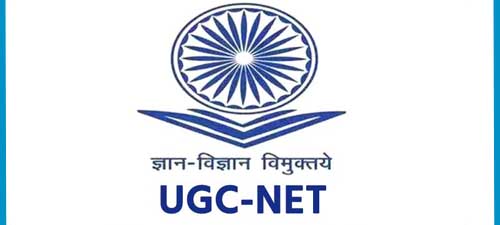Airline Baggage, types & their handling procedures: Baggage on luggage comprises bags or the materials, suitcase, hand baggage, containers etc. which are carried by the Traveller during their journey or transits. The word baggage has been derived from the French word baggage or from bagues which means tie up or bundles.
The baggage broadly comes in three categories:
- Cabin baggage
- Checked baggage
- Special baggage
Cabin baggage or hand baggage or carry-on baggage:
The cabin baggage is baggage that is carried and can be stored in the cabin and is in full control and custody of the passengers it is also known as carry-on baggage. It includes items like purse, laptop. And, it contains other special items but information of that has to be given in advance such as Holy human remains in urns.
Prior to carriage of cabin baggage assessment of the size, number and weight of items should be done as per the air operators standards. Also, the weight aspect with regard to the cabin baggage should be checked. In case the carry-on baggage exceeds the free allowance weight or size. Then it should be hold checked and charged accordingly. A traveller prior to boarding of an aircraft should be well aware about the dangerous food items and be honest enough to convey it to the airline operator.
Usually all types of baggage including the cabin baggage is a handover to airline handling agent at the check in Counter. And there after the passengers receive the boarding pass prior to boarding an aircraft.
If the cabin baggage does not meet the cabin standards then in that case it can be accommodated in and checked baggage.
As told earlier, all types of baggage including the checked baggage is collected at the check in area of the airport. The Traveller is permitted to carry-on luggage with him/her in the cabin. The size or dimensions of the hand baggage in India should be equal to 115 cm {height 55 cm (22 inch) plus length 35 cm (14 inch) plus with 25 cm (10 inch)} for Boeing and Airbus totalling the dimensions in case of international sectors and 110 cm for domestic sector (height 55 cm 22 inches loves length 35 cm 14 inches plus width 20 cm 8 inch). The maximum weight omitted for hand by gauges is 8 kg for passengers.
When a new-born infant or infant if is doing journey present along with an adult, a carrycot or fully collapsible stroller etc. Apart from the above hand baggage allowances, one of the following items of baggage is also allowed such as ladies handbag over and over coat, Orange, camera or Binocular, reasonable amount of reading material for the flight, infants feed, collapsible wheelchair etc.
The infant or toddler is not given seat or free baggage allowance. Though, the adult accompanying the child can carry a carrycot or a collapsible stroller in cabin space, if available or in checked baggage. An abnormal sized luggage will not be allowed in the cabin.
Though, apart from the one piece of cabin baggage, the traveller may be allowed to carry one item such as an overcoat, lady’s hand bag, camera or binoculars, overcoat or wrap, reading material, Collapsible wheelchair, a pair of crutches or braces, Folding umbrella, Walking stick, Medicines, laptop etc. The traveller’s will not be allowed to carry liquids, gels or aerosols such as toothpaste, cream, lotions, hair gels, sprays, liquid cosmetics etc.
Due, to security reasons, travellers going to some cities such as Srinagar in Jammu & Kashmir are not allowed to carry any hand baggage. Also, the Sikh travellers are allowed to carry kripan, but not exceeding 9 inches within India. The power banks can be carried in hand baggage; however lithium battery driven devices are prohibited.
Checked-in Baggage
The checked baggage is the baggage which the air carrier takes into his custody and issues a baggage check full stop and then this baggage goes for storage in the hold of the aircraft. The air operator has full right to refuse the check in baggage if it is improperly or inadequately packed for Air carriage on the ground of weight, size and nature. Every baggage on the aircraft should display his name with the baggage tag.
All the passengers travelling in aircraft are entitled to a predetermined checked baggage allowance which is fixed by the air operator. Incase of checked baggage allowance two concepts are used. The weight concept is used which measures the total weight of checked baggage and whose limit is lay down depending upon the category of cabin class. In some airlines the piece concept is also used and measure of the number of the checked baggage is done.
In case the checked baggage exceeds the weight of piece concept, in that case excess baggage per kg or number is charged. In domestic airlines within India the child baggage allowance varies from first class to economy class. It is 40 kg in case of first class, 35 kg in case of business class, 25 kg in case of economy class and 10 kg in case of infants for all classes.
The passenger handovers the checked baggage in the check in area to the airport staff. First of all the air staff checks for the security sticker and condition of the baggage. And makes sure that the baggage has be screened properly and do not contain any dangerous articles. If the baggage exceeds the free baggage allowance, extra money or allowance is recharged on the basis of weight of item.
And a baggage tag is attached to the baggage. All the registered or check in baggage is segregated in the baggage makeup area (BMA), reconciled by the airline employee, consolidated in trolleys and then dispatched to the region of aircraft movement and parking (RAMP). In the BMA area, the airline employee has to remain vigilant so that no pilferage occurs.
The various functions of baggage makeup area include the segregation of the checked baggage and consolidated in the trolleys according to the type of baggage. All the tags such as security tags and passenger baggage tag are also checked.
Special baggage
Special baggage includes the bulky and oversize baggage, cabin seat baggage, crew baggage, sporting equipment, wheelchairs and mobility aids, pets etc. All the special baggage items should have baggage tag specifying the type of the luggage or baggage also the ULD in which the special baggage is to be stored over it has to be seen whether it is in good condition.
Once the check in stops, the baggage supervisor reviews the total number of pieces for each ULD (Unit Load Device). Thereafter the checked baggage is removed which has the name former security number and an electronic record to locate a ULD. In some countries high standards of baggage screening are adopted and the special luggage is removed in a phased manner depending on the category of the special baggage.
Airline Baggage security
For baggage security IATA has issued strict instructions in IATA Security Manual and Operating airline ground operations manuals. Whether, it is the passengers or the cabin crew, they will have to get their hold baggage identified prior to loading. And, there should be no chance for the interchanging cabin baggage for hold baggage, which may have items which may be used in illegal ways. If the weapons are being carried, they have to be kept in secured locations. The items removed by security personnel during security screening are only accepted for hold luggage.
When the baggage has been collected from the hold baggage during transfer process, it should be considered as originating baggage. But, if the baggage is collected & transferred in sterile area, then re-screening is not important. Reconciliation of passenger or baggage maintained for all flights that is for standby travellers, check in of passengers in group or off airport or in case of voluntary or involuntary deplaning. In case of online and transfer passengers, the checked baggage comes under the additional security controls.
In case of interline passengers, baggage of non- confirmed passengers should not be loaded as hold baggage. In case of disembarking travellers, the baggage (both checked and cabin) should be offloaded, prior to his station of arrival.
After receipt of checked baggage, it is kept in a safe area and the cabin baggage individually identified and marked as crew. The norms for dangerous goods carriage should refer to the IATA dangerous goods regulations (DGR).
Mishandled Airline baggage
In case of mishandled or unclaimed or unidentified baggage, its details should be entered into the tracing system, kept in a safe area and should be subjected to additional security controls before being loaded in the airline craft such as manual search, Simulation chamber, X-ray, vapour or trace analysis.
Also, for it the RUSH tag should be used and the unaccompanied baggage kept in the Aft bulk hold of the aircraft. The mobility aids which have been delayed, damaged or missing handled on the priority basis and instantaneously arrange for its replacement.

Also read Impact of Air Travel on Human Health


